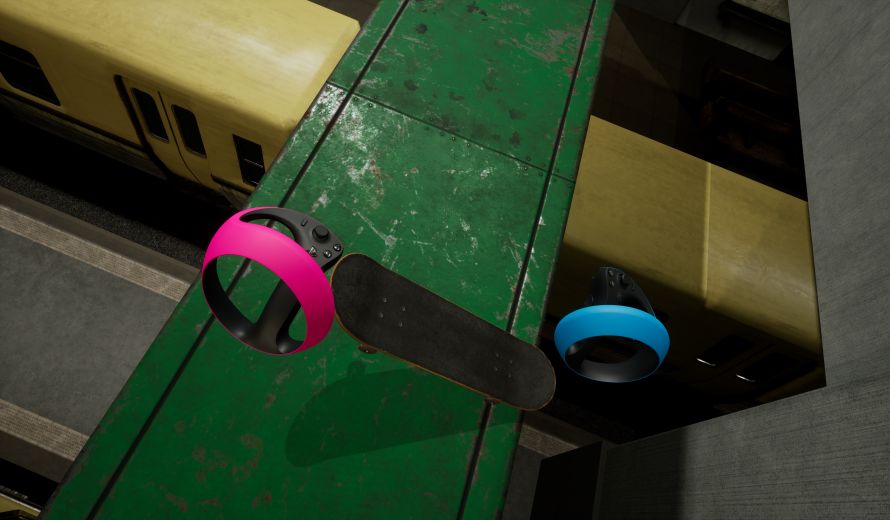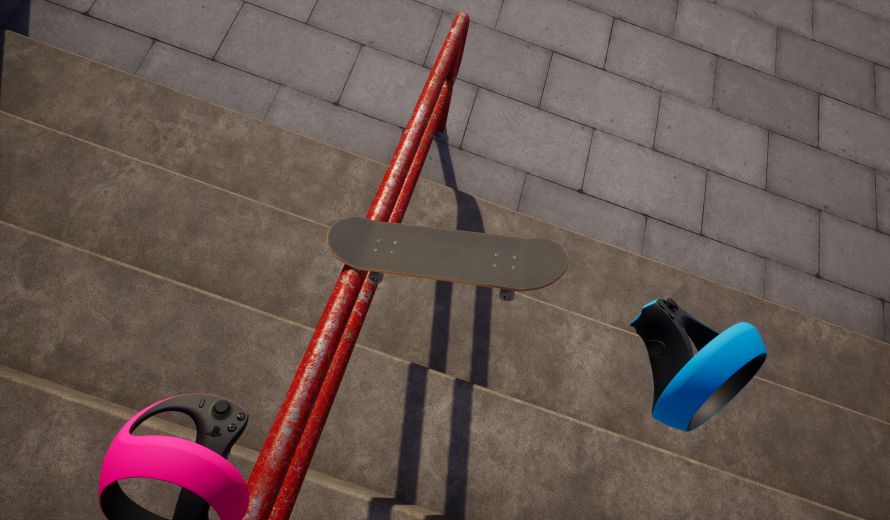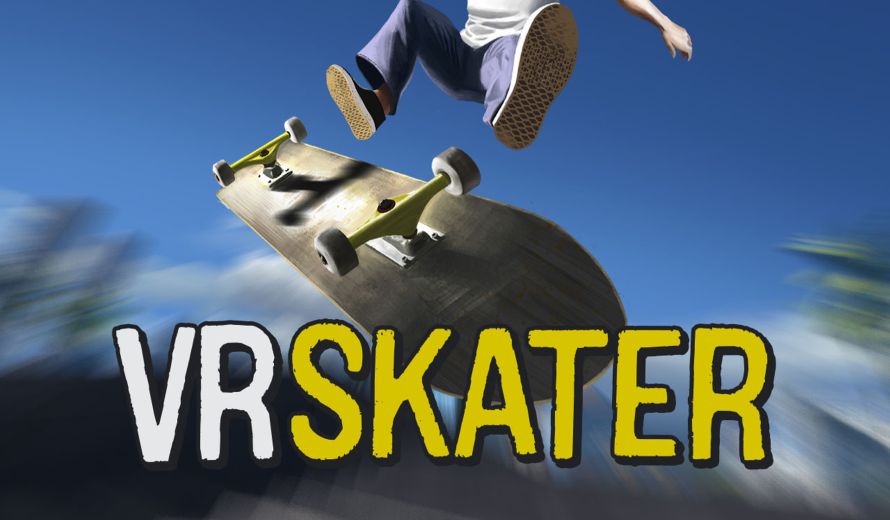VR Skater Review
VR Skater from DEFICIT Games brings a whole new immersion to skateboarding videogames never possible before. This game is as close as being on a real skateboard you can get and without the attendant scrapes and bruises. But how can a VR Game simulate an activity that is mostly controlled by one’s lower body? The answer is obvious, but the implementation is brilliant.
The answer is, of course, with your hands via the controller. Even flat games have done fairly well with the movement and control via a controller, but there is always a bit of a disconnect. VR Skater makes riding a skateboard more intuitive than ever before. With the PSVR 2’s motion controllers to control steering, speed, and braking more naturally than ever before.
In the initial setup for the game, you pick which hand – or foot – is your dominate one. Depending on which foot you put at the back of the board, you use the motion controller on that side for movement. To move, you swing your hand back and forth. The faster you swing, the faster you go. It may sound weird in theory, but it feels quite natural.
You use the other controller to steer. To activate steering, you hold down the main trigger and move your hand in the direction you wish to steer towards. Again, it sounds odd in theory, but in practice works well. With a bit of practice, you’ll sound be booting around areas just as naturally as you do in real life.
Hands Become Feet
To stop, you depress the trigger on the controller you are using for movement. These movement actions are the core of the VR Skater controls. Everything else builds off of them.
All the tricks are button or trigger presses or a combination of them combined with controller movement. Ollies and Nollies are controlled by the two buttons on either controller. The learning curve here is harder, which mirrors skateboarding in the real world. Beyond remembering which controller inputs control which action, you also have to learn how to time them.

The game has a decent set of tutorials to show the controls and provide a space for you to practice in. The sensation of movement and speed is wonderful and feels so real. Swinging your arm to speed up the board on level ground is cool. When you go down a ramp, it intensifies the sensation of speed.
As real as VR Skater feels, it has the advantage of taking the sport beyond what is physically safe – or possible. The rush you get when jumping between skyscrapers is fantastic. You’re also able to grind off objects not possible in the real world.
Static Stages
With the mention of real-world environments, VR Skater does a great job of depicting them. Be it streets, docks, subways, schools, industrial sites, or parking lots – rooftop or otherwise. There are seven in total. However, the locations are, unfortunately, static. There are no pedestrians, no cars, or any activity of any type. This emptiness is the biggest immersion breaker in the game.
The stages are also small and linear. There is no free roam mode, probably a concession needed to maintain the sense of motion in a virtual world. This means there are no ramps etc that allow you to reverse direction. The linearity is worth noting because free roam is a staple in 2D skateboarding games.

There are multiple paths in each of the twelve stages, which is essential to find the optimal paths for hitting the best scores.
As with all skateboarding games, VR Skater includes a sport appropriate soundtrack. The track list comprises a dozen tracks. It’s a mix of Indie and Rap Bands such as We Are The Union, Thousand Oaks, Suave Ski, SLACKRR, and Discrepancies, to name a few.
Skater Songs
You’ll be jamming to the tunes as you try to rack up scores via tricks and combos. All the staple skateboard moves await you to master them. Beyond the jumps – back and front, there is grinding, flips, and the more difficult tricks. As with all good game design, the controls are simple to learn but difficult to master.
VR Skater gameplay gets you to progress your skill level. There are a series of tutorials that introduce more progressively harder skills. Once you master the skill and progress beyond the tutorial, there are practice areas. In them, you can freewheel and practice with no penalties.

Another mode is called the Run. In this mode, there is a limit of a few bails – aka fails – before you can successfully complete a level. With enough practice, longer runs will be possible with more complicated combos. This is the way to getting higher scores and earn extra points.
To keep you motivated, there is an online leaderboard where you can measure yourself against players. Also, skateboard customization is available. Extras and experience points earned from the stages can buy new wheels and paint jobs for your board.
No Haptics
VR Skater introduces a totally unique control scheme that takes time to learn. The button and controller movement combinations will take one a lot of practice to pull off and memorize. You may find this to either be a worthy challenge or a task too demanding for the payoff.
DEFICIT Games previously released this game for PCVR, but the conversion to PSVR 2 does not take full advantage of the platform. Visually, the PS5 seems more than capable of displaying greater environmental detail and scope than what they offered.

Also, there is no use of the haptics from either the controller or the headset. The controls could be easier to learn with the judicious application of controller haptics. They could have made movement more immersive with use of the headset haptics too for when you land a jump, or grind, or, of course, when you bail.
Overall, VR Skater offers a unique skateboard experience, despite not taking full advantage of the power of the PSVR 2 and the PS5. If you are a big fan of Tony Hawk Skateboard videogames, VR Skater is definitely worth checking out.
***VR Skater PS5 code provided by the publisher***
The Good
- Immersive approach to skateboarding
- Easy to learn, hard to master
- Good skater soundtrack
The Bad
- Worlds are lifeless
- Doesn’t use PSVR 2 haptics
- Levels are linear – no free roam

